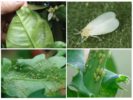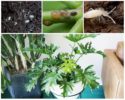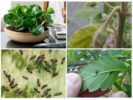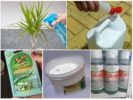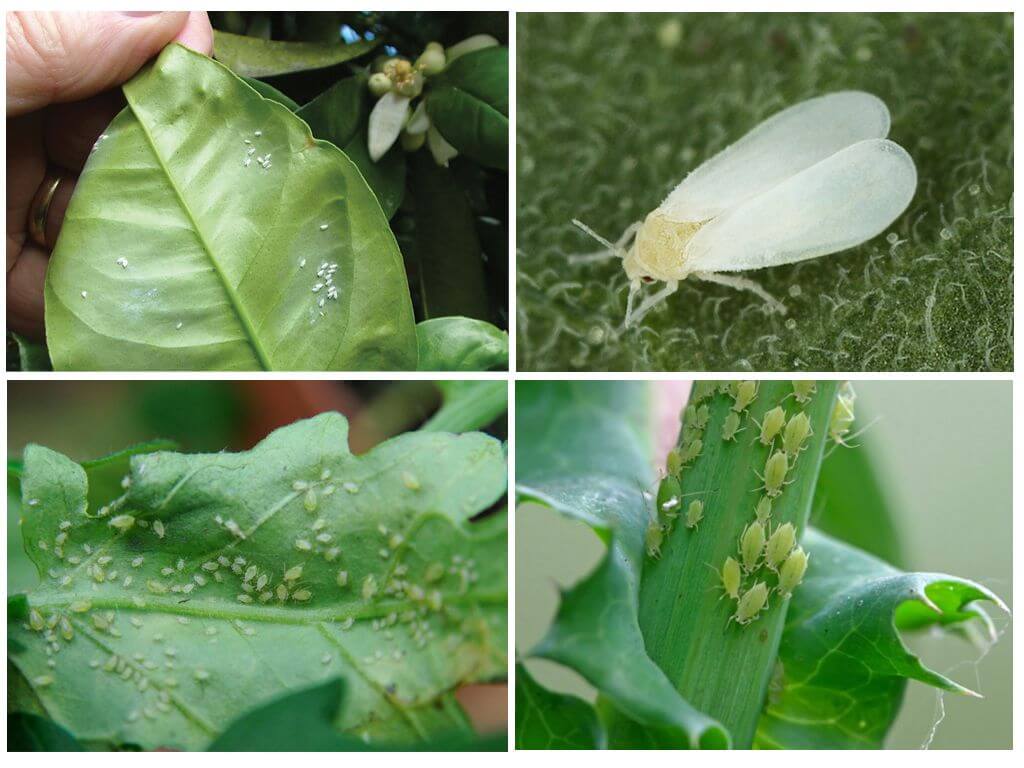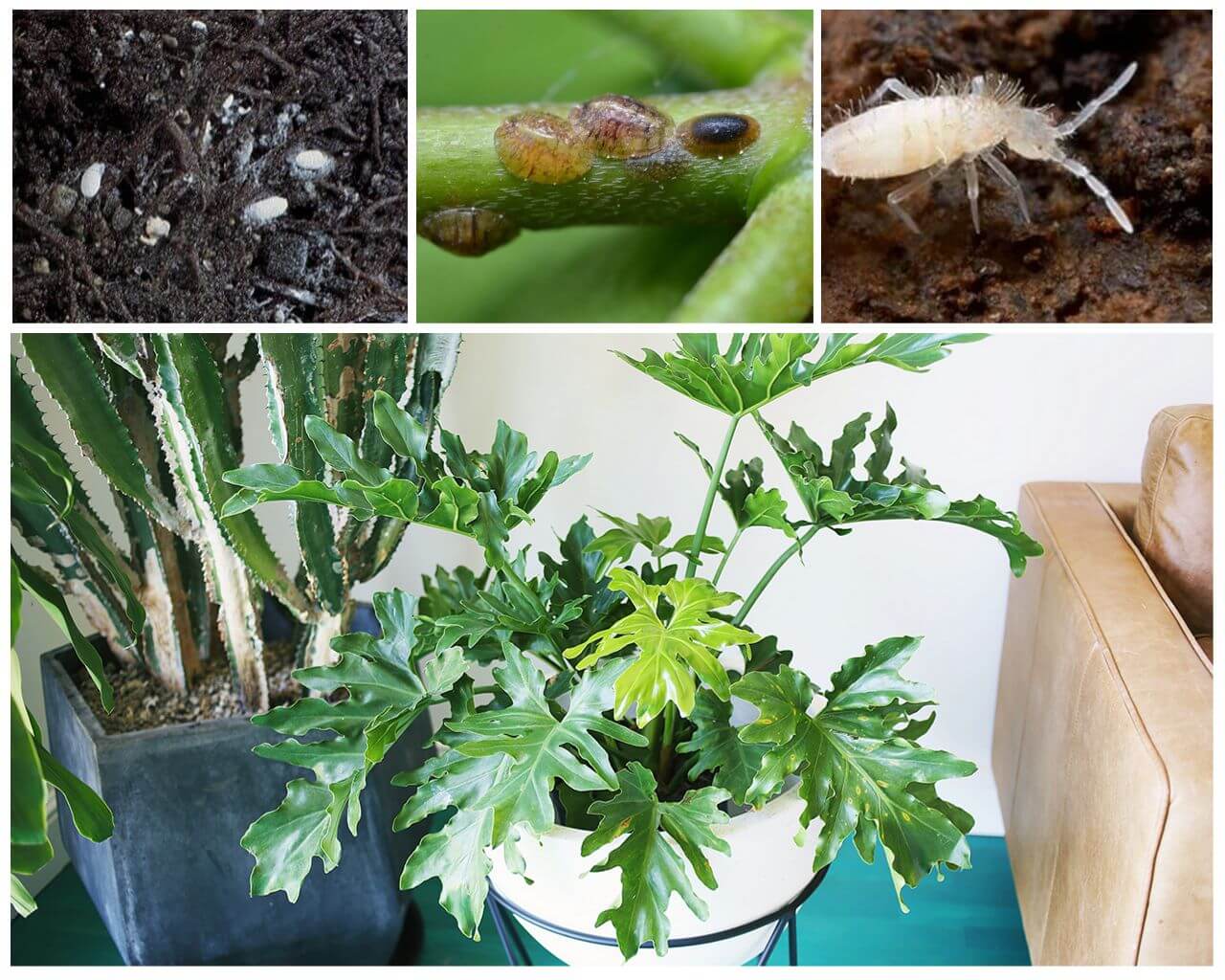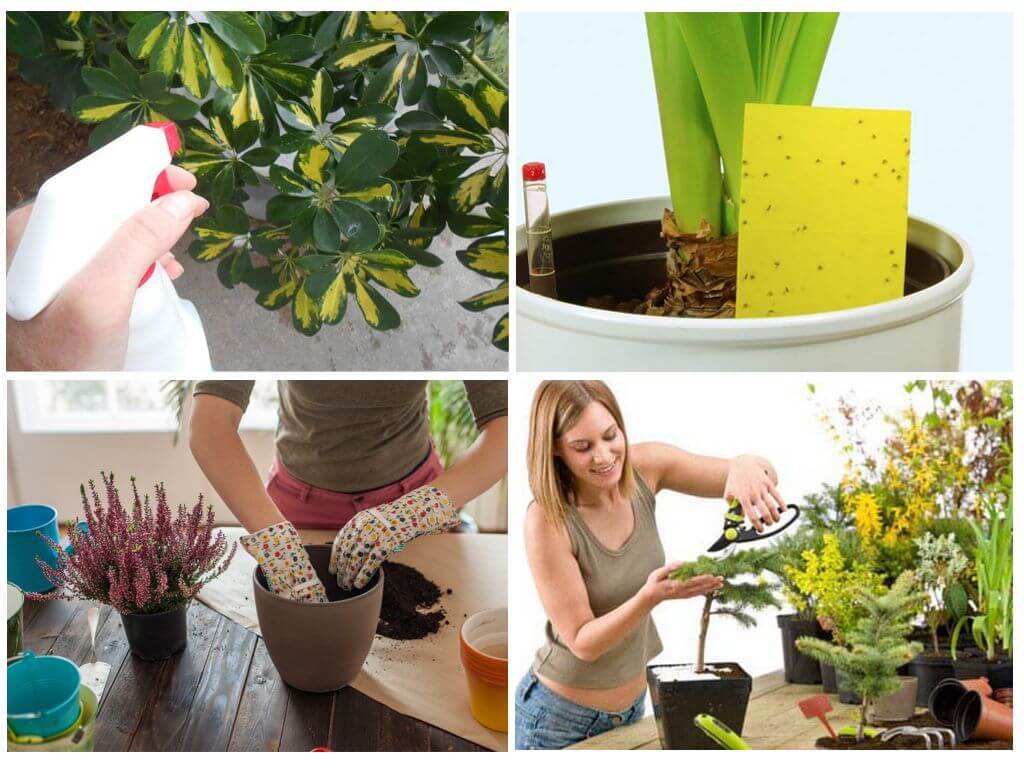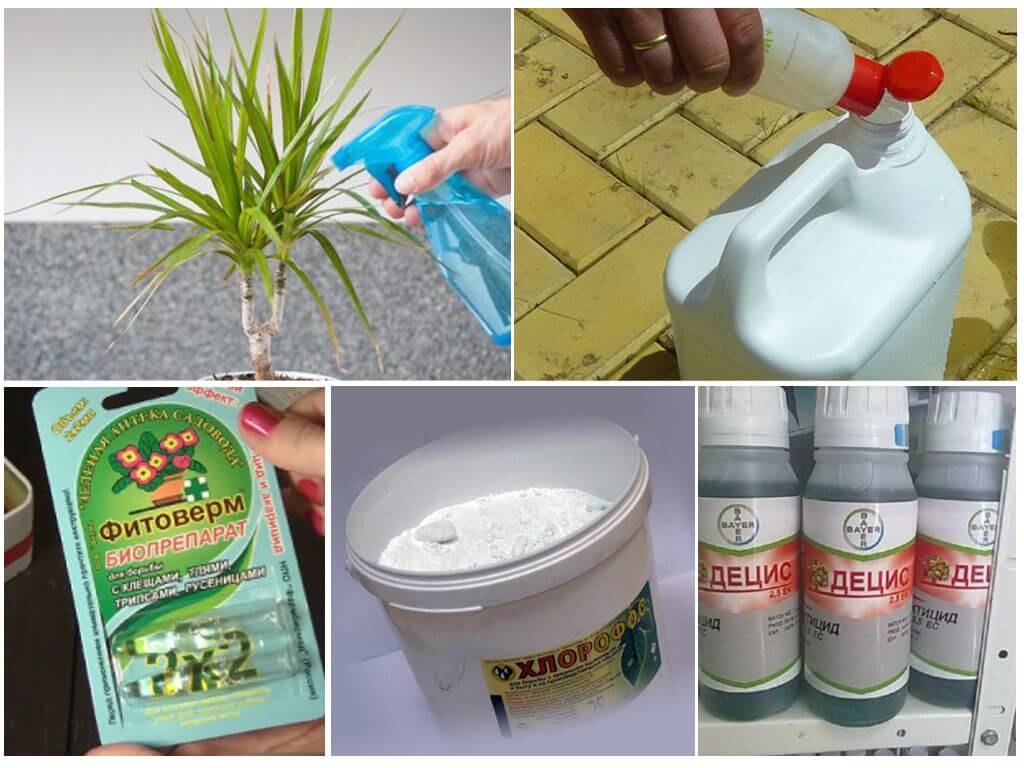- Whiteflies and aphids on indoor plants
- Rootworms, scutellum and white fool
- Spider mite, thrips and mushroom mosquitoes
- Ways to control insects
- Pest Control Chemicals
All living creatures are subject to the diseases and attacks of enemies, and indoor plants are no exception. Withering of the stands is facilitated not only by improper care and adverse conditions. There are also pests of indoor plants, which pose a serious threat to the "green friends". This article will tell about the most common types of such insects.
Withering, inconspicuous buds, a weak stem and damage to the root system are the results of the activity of flower parasites. Therefore, the control of pests of indoor plants should be timely, otherwise the deplorable consequences cannot be avoided. Below are the names and descriptions of pests, the appearance of which is a threat to green pets.
Whiteflies
Many tiny flower lovers are familiar with tiny tiny moths whose body length is not more than 2 mm. A distinctive feature of the pest is a yellowish body and two pairs of pollinated wings:
- parasites can be detected on the back of the leaf plate;
- a sign of the presence of insects are sweetish traces, on which a sooty fungus subsequently appears.
Thanks to the sucking mouth larvae feed the juice of the plant, as a result of which it gradually fades and may even die.
On a note!
Inhabitants of greenhouses prefer hibiscus, pelargonium or begonia. It is enough to appear only one individual, so that after a while a houseplant attacked a whole population of whiteflies. Therefore, upon detection they must be dealt with immediately.
Aphids
Another species of harmful insects with a piercing-sucking mouth apparatus. Parasites have an egg-shaped body, the size of which does not exceed 2 mm. Despite the long legs, moves aphid not at all fast. The color of the insect varies depending on the species (from yellow-green to burgundy-black).
In nature, there are both wingless and winged individuals. They can enter the house through a window, along with purchased plants and even in a brought bouquet of flowers.
Shaggy aphids
Mealybugs or, as they are also called shaggy aphids, are considered one of the most dangerous pests. These white worms live on the stems and back of the leaf at the vein passage sites. About presence mealybugs evidence of a spider-like plaque of white color, as well as the sticky liquid secreted by them.
Female pests are highly fertile. They lay their eggs in secretions resembling cotton balls. After a while, mobile larvae appear from them, which spread very quickly throughout the plant. Therefore, having discovered traces of the presence of mealybugs, it is urgent to get rid of them.
Root Worms
The root root system also poses a threat to the plant root system.Pests live in the ground or on the bottom of the stems, which is why a whitish coating appears on them. Not very mobile females are much larger than males (reach up to 2.5 mm). They have a cylindrical body, covered with a waxy coating. Female eggs lay eggs in special chambers created from their own mold-like secretions.
Males are very similar to whiteflies. They stop eating in the state of an adult, and therefore die pretty quickly. That is why whole generations of insects are female.
On a note!
The presence of insects inhibits the growth of flowers, the leaves begin to fade and frown. Infected plantations are also susceptible to fungal diseases.
Shields
On green pets, several species of scale insects can parasitize. So, from the palm scale, the petioles and palm leaves suffer. There are also cactus, pink, ivy, Californian, laurel and even oleander scale insects. Like turtles, they hide under their shells. Get rid of scale insects on indoor plants many dream. Florists often have to fight the scab on orchids and lemon.
A serious danger to the plant is a false shield, a distinctive feature of which is the absence of a wax shell. Larger sizes of female insects (up to 5 mm), unlike males, they do not have legs and wings. The body of female individuals is covered with a convex shield, which can be either elongated or rounded.
Sucking pests settle on the stem or along the veins on the back of the leaf. There is also a hemispherical false shield, distinguished by large dimensions and volume. Ferns, asparagus and myrtle especially suffer from it. Below is a photo of pests of indoor plants.
White fools
Quite often, small jumping insects - white fools - start up in flower pots. These plant parasites are:
- have an elongated body covered with sparse hairs;
- 3 pairs of legs;
- long antennae;
- prefer moist soil, compost and humus.
Soil pests feed on plant debris, and will not refuse a living root system. This slows down the growth of the plant and can lead to its death.
Spider mites
Spider mite is one of the most common and dangerous pests of indoor plants, which many gardeners have managed to deal with. A small, barely noticeable, insect is difficult to see without a magnifying glass. It lives on the underside of leaf plates. It multiplies rapidly in the presence of favorable conditions, namely, when dry and warm air is present in the room.
Evidence that the plant is affected by a tick is indicated by:
- light spots formed after injections of leaf plates and suction of juices from them;
- the presence of the thinnest cobwebs covering the surface of the leaves, which is why they acquire a silver-gray color and eventually fall off.
Especially from spider mites Chinese roses, geraniums and palm trees suffer.
Thrips
Thrips are called small, not more than 1.5 mm long insects having a black or dark brown color. The lower body is reddish yellow. Pests of indoor plants live on the back of the leaf. Lay eggs in microscopic holes made in leaves and flower buds.
On a note!
A silver pattern, which insects leave on the leaves, indicates the presence of thrips on a houseplant.
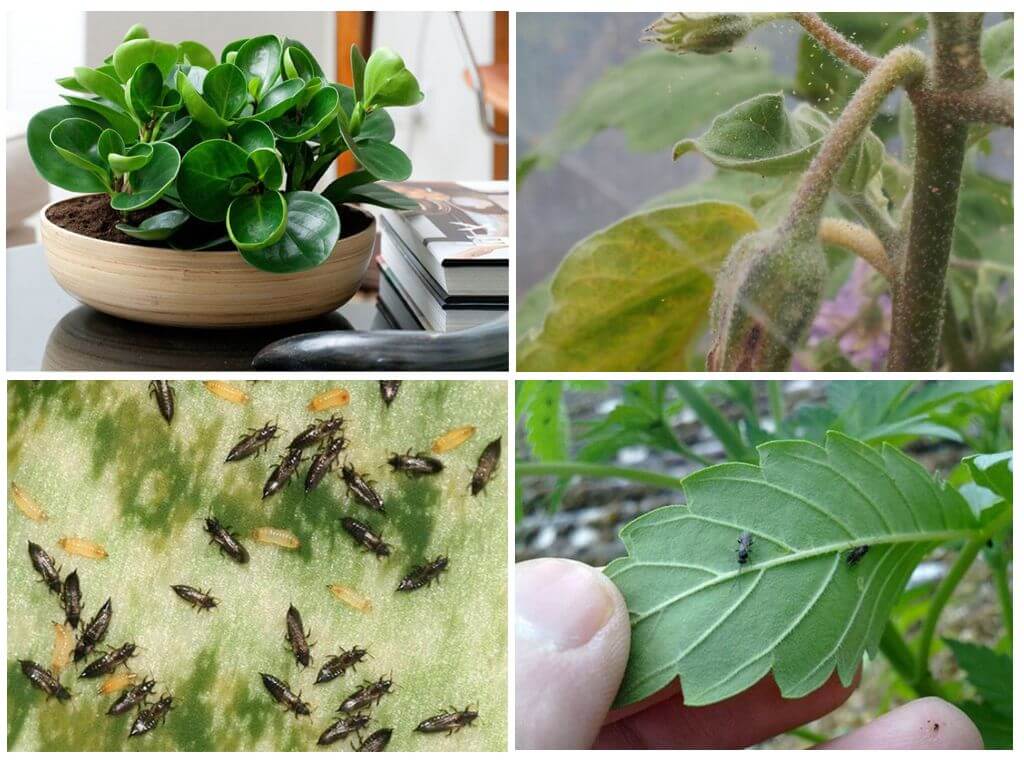
Mushroom mosquitoes (sciarides)
Often around indoor flowers you can see small (up to 0.5 cm) flies, which are called mushroom mosquitoes. Sexually mature sciarides infect flowers and are carriers of larvae of other pests.In addition, they lay eggs in the roots of plants, from which larvae appear over time - dangerous pests of indoor plants in the soil. Whitish worms damage the root system of the culture, causing its death.
How to get rid
The question of how to deal with pests of indoor plants is puzzled by many amateur gardeners. There are various ways to solve this problem:
- by machining;
- the use of biological products;
- use of chemical funds from midges and other parasites;
- the use of folk recipes.
Mechanical method
The easiest and most affordable way to control pests of indoor plants at home. Damaged leaves should be cut with a disinfected tool, and the places of the cuts must be treated with activated charcoal. Visible pests, such as scale insects or worms, can be selected manually.
On a note!
A contrast shower, spraying with water, or wiping a pest-infected surface with a pest will also help rid a green friend of the insects that live on its stems and leaves.
The use of folk recipes
During plant diseases caused by harmful insects, many growers use time-tested folk remedies. Decoctions of chamomile, nettle, yarrow, dandelion or marigolds are completely harmless both to human health and to the plant itself. Garlic and onion have a similar effect. It is enough to water and spray the plant with broth, so that the pests leave it.
Citrus peels, which should be steamed and buried in the ground, are no less effective. The aroma they emit will not be to the liking of plant parasites.
Wood ash, furatsilin, soda or potassium permanganate are very effective in controlling pests of indoor plants. The solution prepared from them is used to treat infected plants.
On a note!
The liquid composition will not quickly drain into the soil if you add laundry soap to it.
Biological method
This method of control involves the use of biological agents, the basis of which are plant components, as well as a small amount of poison. Therefore, when using these drugs, safety precautions must be observed:
- plants are treated with a solution prepared in accordance with the instructions;
- after which the green pet should dry;
- the room in which the treatment was carried out is thoroughly aired.
Get rid of midges and other pests in indoor flowers it is possible with the help of drugs: Agrovertin, Fitoverm or Iskra-Bio.
Chemical method
The use of chemicals based on insecticidal components will help to achieve a quick result in the control of pests of indoor plants. However, it should be borne in mind that they are very toxic and pose a danger to human health. Therefore, it is desirable to use such funds only, as a last resort. Moreover, the treatment in this case should be carried out in a well-ventilated area and in the presence of personal protective equipment.
Important!
When using toxic drugs, children and pets should not be in the room.
Such drugs as Pyrethrum, Chlorophos, Fury, have proven themselves well in controlling pests of indoor plants. Thunder 2, Karbofos or Decis.
